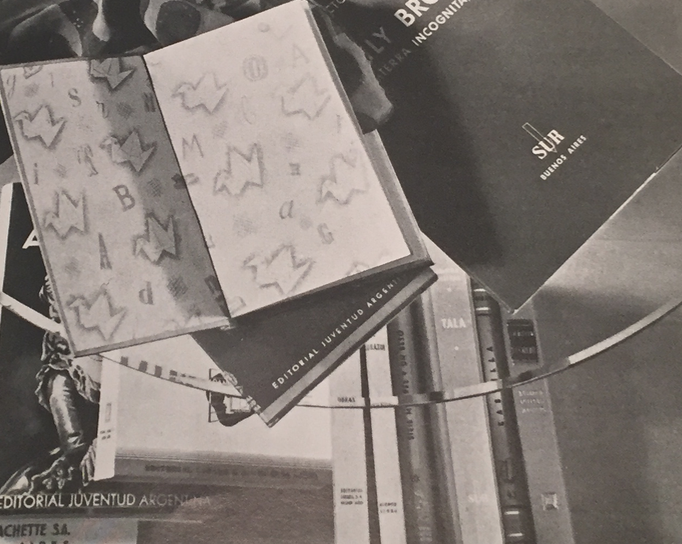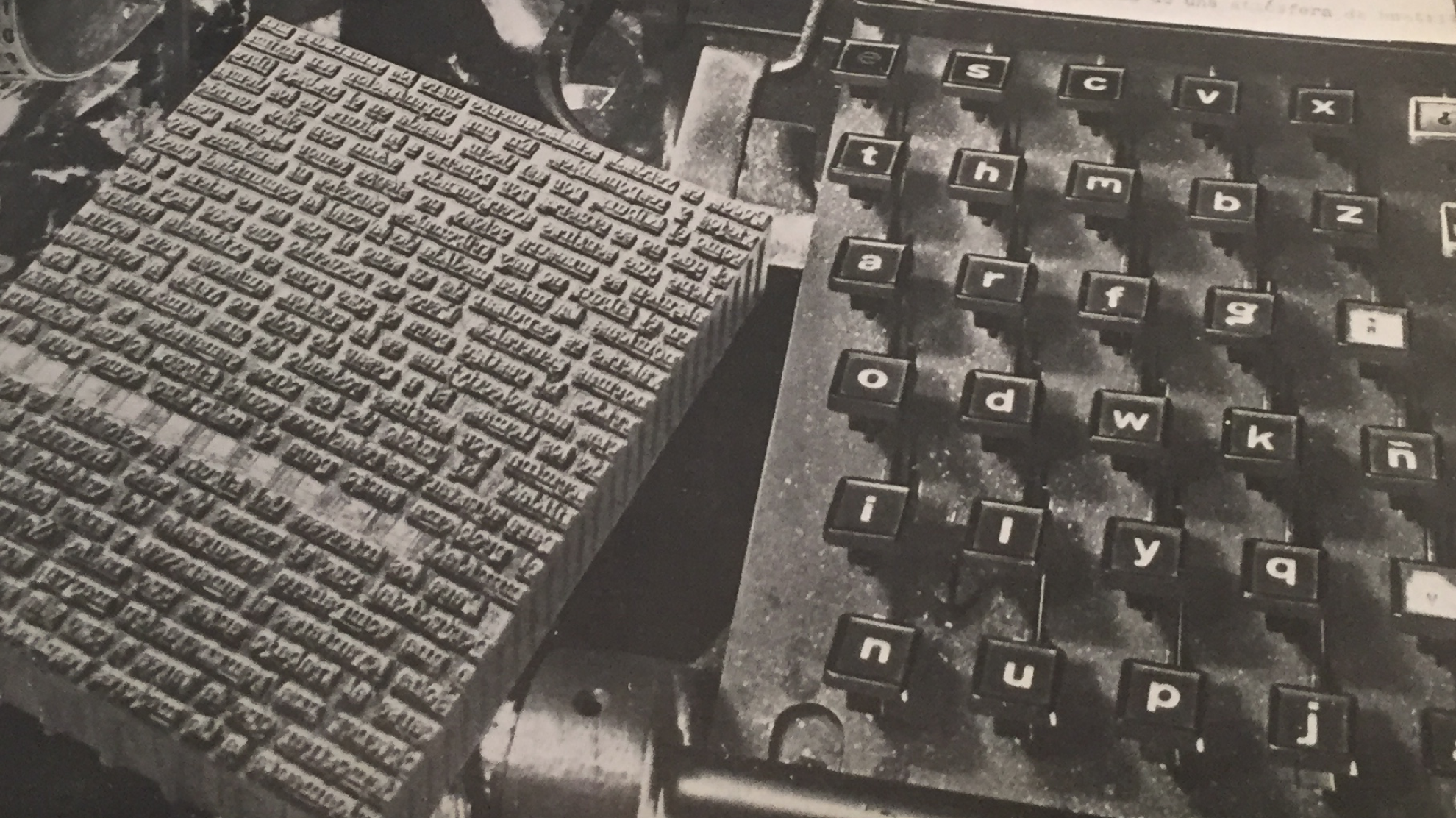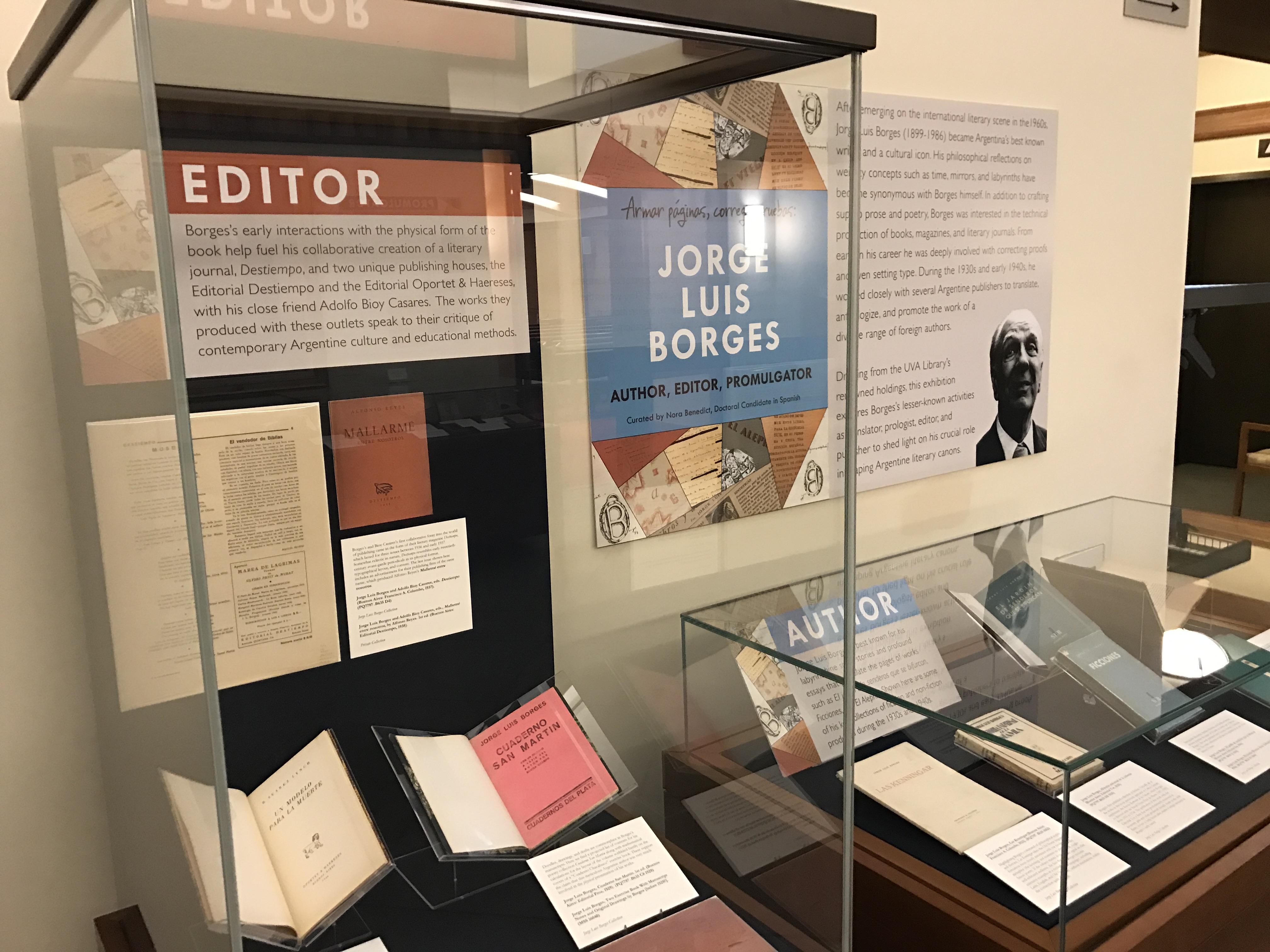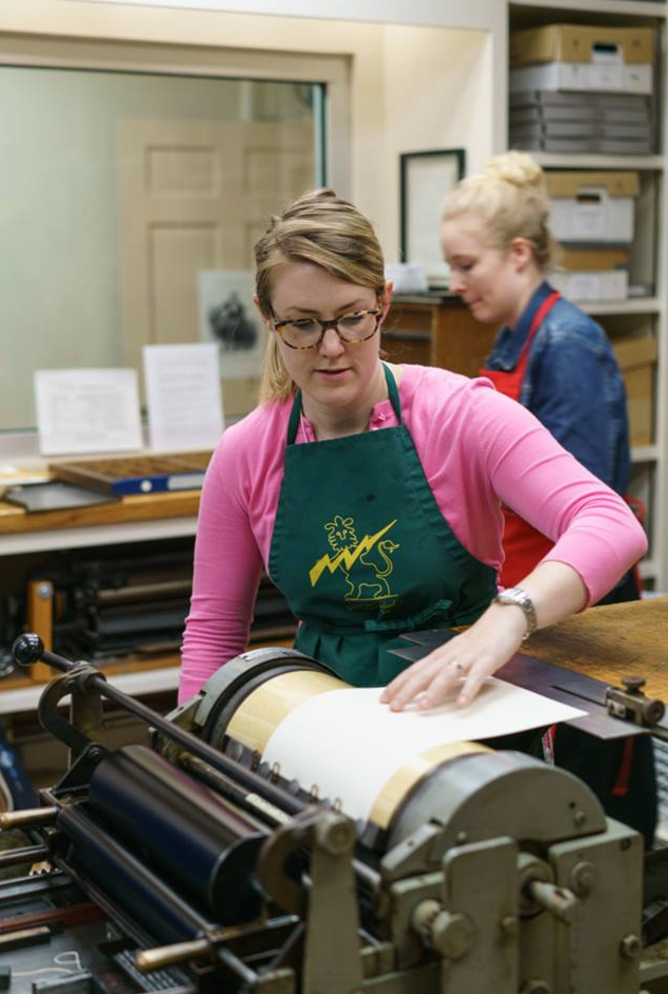Jorge Luis Borges and the Argentine Publishing Industry
 Before becoming a beacon of Spanish-language publishing in the early twentieth century, Buenos Aires was known for its huge smattering of bookstores and, to this day, still maintains that fame. Interestingly, what we find in the scant descriptions of these bookstores is their high level of specialization. Thus, for instance, Jorge Luis Borges’s passion for English literature, undoubtedly a result of the influence of his English grandmother on his formative years, led him (frequently) to bookstores such as Mackern’s (Sarmiento 525) and Mitchell’s Book Store (Cangallo 580), both of which specialized in imported foreign literature (mainly English). Alongside these two regularly visited shops, several of Borges’s personal books from the Biblioteca Nacional also contain tags from a number of other bookstores including Pymalion, Goethe, Beutelspacher, and Viau y Cía, all of which contain inventory ranging from books produced by British and German publishing firms to luxury books, or art books, of fine quality paper and exquisite bindings.
Before becoming a beacon of Spanish-language publishing in the early twentieth century, Buenos Aires was known for its huge smattering of bookstores and, to this day, still maintains that fame. Interestingly, what we find in the scant descriptions of these bookstores is their high level of specialization. Thus, for instance, Jorge Luis Borges’s passion for English literature, undoubtedly a result of the influence of his English grandmother on his formative years, led him (frequently) to bookstores such as Mackern’s (Sarmiento 525) and Mitchell’s Book Store (Cangallo 580), both of which specialized in imported foreign literature (mainly English). Alongside these two regularly visited shops, several of Borges’s personal books from the Biblioteca Nacional also contain tags from a number of other bookstores including Pymalion, Goethe, Beutelspacher, and Viau y Cía, all of which contain inventory ranging from books produced by British and German publishing firms to luxury books, or art books, of fine quality paper and exquisite bindings.
The central aim of Borges and the Literary Marketplace: How Editorial Practices Shaped Cosmopolitan Reading (Yale UP, 2021) is a materially informed look into Borges’s involvement in the Argentine book world in the early part of his literary career (1930-1951): who were his primary publishers? What types of editorial jobs did he hold? Which works were independently printed and which did others fund? What can we tell about his development of aesthetics based on analysis of typography and paper choices? By asking these types of questions about Borges’s preferences toward the publication of his own works, we also find that he had a very specific taste for the look and feel of others’ books and, in one of his early works from this period, makes a snide, and extremely revealing, remark about second-hand bookstores as nothing more than “turgid purgatories.” In light of the fact that the place in which a book is published, printed, and even purchased are all key characteristic of that specific volume, I was interested in creating a digital project that allowed me to think deeply about the spatial (and temporal) evolution of the process of publication (and, in turn, the circulation of published works) in Jorge Luis Borges’s Argentina (1930-1951). I see my project as the perfect intersection of literature, publishing history, and economics, all of which have played a crucial role in my work thus far.
Mapping Borges
As a Digital Humanities Fellow in the Scholars’ Lab at the University of Virginia, I worked to develop this mapping and data visualization project to trace the role of publishers and printers in Jorge Luis Borges’s Argentina (1930-1951) and to provide a digital archive of records of the physical features of books from this moment and time in history. This project has two distinct elements. The first is an interactive map of the locations of Borges's publisher, printers, booksellers, and places of employment from 1930 to 1951. This part uses Leaflet to visualize all of the geospatial data I collected about the publishing firms and printers that Borges worked with in Argentina. Along with each physical point I created on the map, I have included brief histories of these firms, an inventory of Borges’s books that they produced, and a list of interconnected firms, all of which pops up in a box alongside the geographical locations. The second part of the project is a descriptive bibliography, or a description of the physical elements of the books that Borges wrote, prologued, translated, or edited during the 1930s and 1940s. I chose the sleek horizontal timeline format for its clear presentation and also to challenge to myself with a semi out-of-the-box tool. In light of the fact that there are virtually no extant publishers’ archives from the Argentine firms I have been studying for my research, I see this DH project as a way to give future scholars access to much of the raw data I have created throughout the process and, hopefully, provide them with a resource to create projects of their own.
UVa Borges Collection
Much of the raw data that drives this project, from the descriptive bibliography to the GIS mapping itself, would not have been possible without the holdings in the Borges Collection housed in the Albert and Shirley Small Special Collections Library at the University of Virginia. Like most, I first encountered this collection by happy accident. Aside from the incredible experience of leafing through manuscripts and letters written by Borges himself, what struck me most about the collection was its extreme level of completeness. From a bibliographical standpoint, the holdings are ideal for any type of textual investigation. In addition to the rich manuscripts and rare periodicals, there is also at least one copy of each and every edition that Borges ever published throughout his lifetime (in some cases there are multiple copies of works almost as rare as the manuscripts!). In a sense, it is the perfect place to study the evolution of his writing process from manuscript to first edition to subsequent editions.
 Having spent the better part of five years undergrounds with the collection’s holdings, I’m always eager to talk about the unique treasures that one might find here, which, more often than not, leads others to ask, time and time again, the question of how these items ended up at UVA. I, too, wondered this same thing when I first laid eyes on original manuscripts from Fervor de Buenos Aires, pristine copies of the rare Prisma mural magazine, and incredible drawings in Borges’s distinctive hand. That said, I soon discovered that the presence of this collection at UVA makes perfect sense for a number of reasons. First is its link to the university’s largest collection strength, American history and literature, which should not be restricted to North America, but must logically extend to all of the Americas. Alongside this clear connection, I also see the university’s rich history of bibliography and the
study of the book as object as crucial to understanding the decision to make UVA the home for these materials since they easily allow scholars to trace and identify any changes in a work (whether it be in wording or in the physical presentation of the text).
Check out my UVA exhibit on Borges!
Having spent the better part of five years undergrounds with the collection’s holdings, I’m always eager to talk about the unique treasures that one might find here, which, more often than not, leads others to ask, time and time again, the question of how these items ended up at UVA. I, too, wondered this same thing when I first laid eyes on original manuscripts from Fervor de Buenos Aires, pristine copies of the rare Prisma mural magazine, and incredible drawings in Borges’s distinctive hand. That said, I soon discovered that the presence of this collection at UVA makes perfect sense for a number of reasons. First is its link to the university’s largest collection strength, American history and literature, which should not be restricted to North America, but must logically extend to all of the Americas. Alongside this clear connection, I also see the university’s rich history of bibliography and the
study of the book as object as crucial to understanding the decision to make UVA the home for these materials since they easily allow scholars to trace and identify any changes in a work (whether it be in wording or in the physical presentation of the text).
Check out my UVA exhibit on Borges!
About Me

I am currently an Associate Professor of Spanish and Digital Humanities in the Romance Languages Department at the University of Georgia. Before arriving in Athens, I was a postdoctoral fellow in the Center for Digital Humanities at Princeton University.
My first monograph, Borges and the Literary Marketplace (Yale University Press, 2021), considers the marked presence of books, periodicals, and other print mediums in Jorge Luis Borges’s life by analyzing the physical features of his publications, which I read through the lens of analytical bibliography and material studies. In particular, I examine how each of his works were composed and circulated among diverse audiences, the publishers with whom he entered into contracts, his own level of bibliophilia, and how all of these factors influenced not only his formation as a writer, but also cosmopolitan reading in Latin America.
I also co-edited The Oxford Handbook of Jorge Luis Borges (Oxford University Press, 2024) with Daniel Balderston.
My current project, Bound Togther: Global Interdependence in the Latin American Book Market, 1940–1970, examines how international publishing firms directed their energies toward Latin America, what kinds of strategies they employed, and which areas they targeted as they began to enter the market and forge collaborative alliances; it also identifies the kinds of materials that these firms supplied, again driven primarily by market considerations.
Read more about my current work!